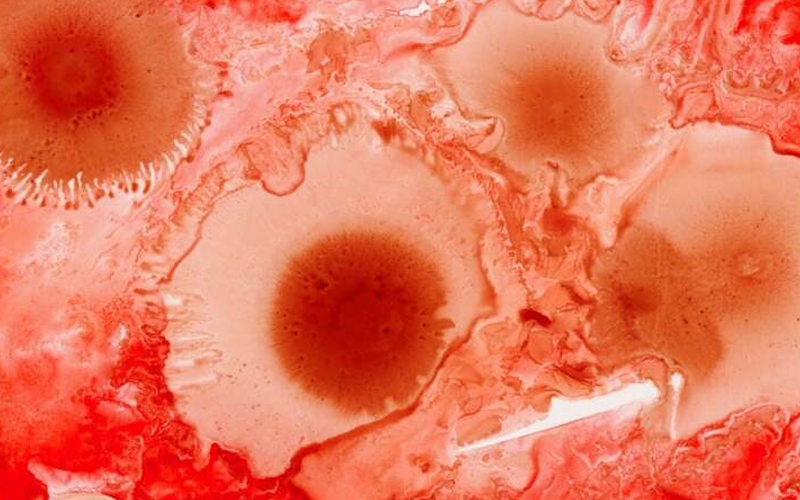Erythrocytosis
Erythrocytosis is a condition in which your body makes too many red blood cells (RBCs), or erythrocytes. RBCs carry oxygen to your organs and tissues. Having too many of these cells can make your blood thicker than normal and lead to blood clots and other complications.
There are two types of erythrocytosis:
Primary erythrocytosis. This type is caused by a problem with cells in the bone marrow, where RBCs are produced. Primary erythrocytosis is sometimes inherited.
Secondary erythrocytosis. A disease or the use of certain drugs can cause this type.
Between 44 and 57 out of every 100,000 people have primary erythrocytosis, according to a 2013 review Trusted Source of the condition. The number of people with secondary erythrocytosis may be higher, but it’s hard to get an exact number because there are so many possible causes.
Erythrocytosis vs. polycythemia
Erythrocytosis is sometimes referred to as polycythemia, but the conditions are slightly different:
- Erythrocytosis is an increase in RBCs relative to the volume of blood.
- Polycythemiais an increase in both RBC concentration and hemoglobin, the protein in red blood cells that carries oxygen to the body’s tissues.

What causes this?
Primary erythrocytosis can be passed down through families. It’s caused by a mutation in genes that control how many RBCs your bone marrow makes. When one of these genes is mutated, your bone marrow will produce extra RBCs, even when your body doesn’t need them.
Another cause of primary erythrocytosis is polycythemia vera. This disorder makes your bone marrow produce too many RBCs. Your blood becomes very thick as a result.
Secondary erythrocytosis is an increase in RBCs caused by an underlying disease or the use of certain medications. Causes of secondary erythrocytosis include:
- smoking
- a lack of oxygen, such as from lung diseases or being in high altitudes
- tumors
- medications such as steroids and diuretics
- Sometimes the cause of secondary erythrocytosis is unknown.
What are the Erythrocytosis symptoms?
Symptoms of erythrocytosis include:
- headaches
- dizziness
- shortness of breath
- nosebleeds
- increased blood pressure
- blurred vision
- itching
Having too many RBCs can also increase your risk for blood clots. If a clot becomes lodged in an artery or vein, it can block blood flow to essential organs like your heart or brain. A blockage in blood flow can lead to a heart attack or stroke.
How is this diagnosed?
Your doctor will start by asking about your medical history and symptoms. Then they’ll perform a physical exam.
Blood tests can be done to measure your RBC count and erythropoietin (EPO) levels. EPO is a hormone your kidneys release. It increases production of RBCs when your body is low in oxygen.
People with primary erythrocytosis will have a low EPO level. Those with secondary erythrocytosis may have a high EPO level.
You may also have blood tests to check levels of:
Hematocrit. This is the percentage of RBCs in your blood.
Hemoglobin. This is the protein in RBCs that carries oxygen throughout your body.
A test called pulse oximetry measures the amount of oxygen in your blood. It uses a clip-on device that’s placed on your finger. This test can show whether a lack of oxygen caused your erythrocytosis.
If your doctor thinks there might be a problem with your bone marrow, they’ll likely test for a genetic mutation called JAK2. You may also need to have a bone marrow aspiration or biopsy. This test removes a sample of the tissue, liquid, or both from inside your bones. It’s then tested in a lab to see if your bone marrow is
You can also get tested for the gene mutations that cause erythrocytosis.
- Treating and managing erythrocytosis
- Treatment aims to reduce your risk of blood clots and relieve symptoms. It often involves lowering your RBC count.
Treatments for erythrocytosis include:
- Phlebotomy (also called venesection). This procedure removes a small amount of blood from your body to lower the number of RBCs. You may need to have this treatment twice a week or more often until your condition is under control.
- Aspirin. Taking low doses of this everyday pain reliever may help prevent blood clots.
- Medications that lower RBC production. These include hydroxyurea (Hydrea), busulfan (Myleran), and interferon.
What’s the Erythrocytosis outlook?
Often the conditions that cause erythrocytosis can’t be cured. Without treatment, erythrocytosis can increase your risk for blood clots, heart attack, and stroke. It can also increase your risk for leukemia and other types of blood cancers.
Getting treatment that lowers the number of RBCs your body produces can reduce your symptoms and prevent complications.
If you Have Any Queries, Call Us On
+91-8193809030
